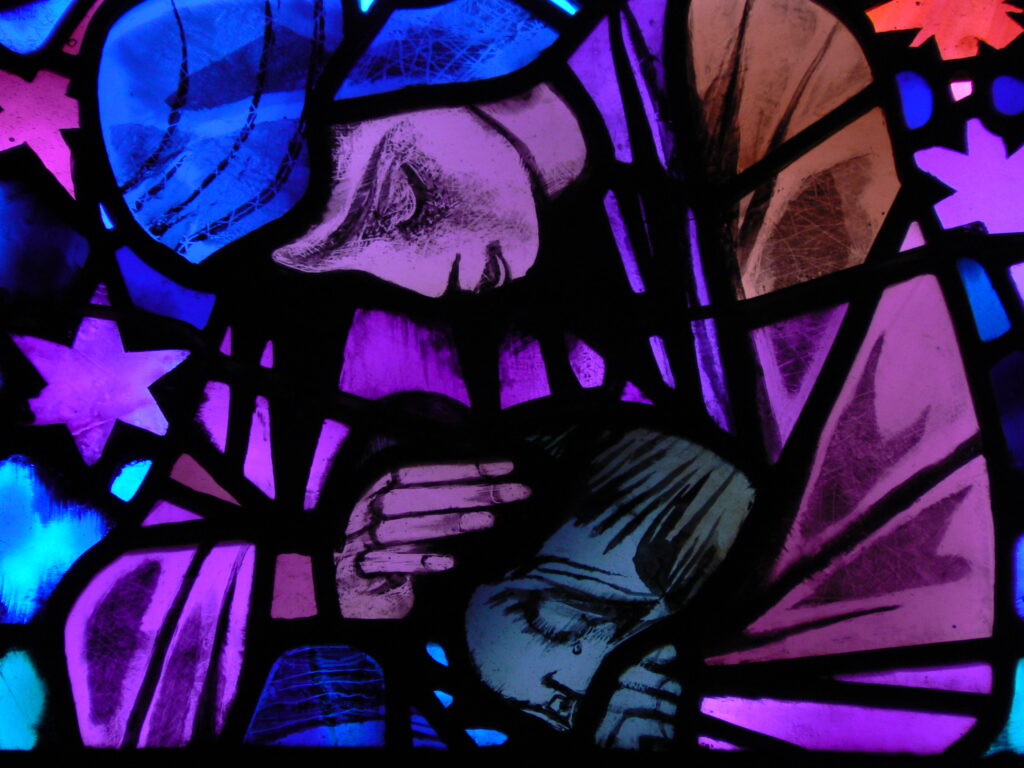In my work with people who have terminally ill family members, I have listened to many stories about the last moments of life. In addition, hospice workers have come and shared with my clients and me information about the end of life that most of us our sheltered from.
All this has helped me become more comfortable with death. Getting a glimpse of what happens inside the minds of the dying can help prepare you if someone you love is terminally ill.

Pre-Death Visions
It is well-known by professionals who work with the terminally ill that as patients get closer to death they often report having visions of and conversations with friends and family who have already died, or in some cases they report having conversations with God or Jesus.
Sometimes people are frightened by these visions, often because they believe they might be going crazy. Simple reassurance that the person is not crazy can bring about great relief.
Unfortunately most doctors are trained to medicate patients with anti-anxiety drugs and medications that will produce amnesia. They treat these visions as hallucinations or dementia.
But if you can help understand whether or not the vision itself was disturbing or comforting to the person, and why, you can better help the patient.
Helping Patients Feel Peaceful About Dying
Some are disturbed by their visions because they are not yet ready to die. They might have unfinished business, unresolved issues, or fear. It can be helpful to reassure these patients that it is ok for them to let go, and allow them to express any fears or say goodbye.
You can also say whatever you feel has been left unsaid at this time. It will help during the grieving process if you have reconciled though sometimes this is impossible. It will also help you if you have told the person what is in your heart.
If a dying patient is willing to talk about his or her death, it is not helpful to deny that they are at death’s door or to pretend that they will get better. This is one time when “thinking positive” is not helpful.
Pre-Death Visions Can be Reassuring
Many are actually calmed and reassured by their pre-death visions, and want to remember them. The visions often help people willingly and peacefully embrace their own death.
Enlisting the help of hospice services during this time can help. Unlike many medical doctors, hospice workers and palliative care doctors and nurses are trained to help patients and families deal with these end of life phenomena.
The Near Death Experience
Researchers estimate that one in three people who recover from a brush with clinical death report having had a near death experience. While this is not proof of life after death, it does say something about consciousness and how you should handle a dying patient.
There are common themes reported by those who have experienced these, including: being outside one’s body, watching doctors and nurses working on oneself, passing through a tunnel toward a light, gaining knowledge and a feeling of unconditional love, being with deceased friends and family, and ultimately returning to the body.
Many clinically “dead” or comatose patients accurately report exactly what was going on in the room (and even in other rooms) before they came back to life.
People should never assume that their comatose or unconscious loved one can’t hear them. Any conversation in the room of such a patient should be limited only to what is ok for the patient to hear.
The Near Death Experience is Comforting to Most
NDE researchers such as Dr. Kenneth Ring report that NDE’s cause dramatic, positive changes in people who have them. These people no longer fear death, are less fearful generally, and they feel more love, compassion and good-will toward others.
Conversely, patients who brushed death and did not have NDE’s seem to fear death more and live more cautiously, research shows. Some people who recover from a clinical death have negative or frightening NDE’s, but they seem to be in the minority.
Facing the inevitable death of a sick loved one and helping her through it, instead of pretending it is not happening, can be healing for everyone involved.
©Lisa C. DeLuca, all rights reserved. It is a violation of copyright law to reproduce this work without permission from the author. However, links are appreciated and you may reproduce up to fifty words and provide a link back to this article. For other arrangement or reprints, please contact the author with your request. This article was originally published on the web in 2008.
